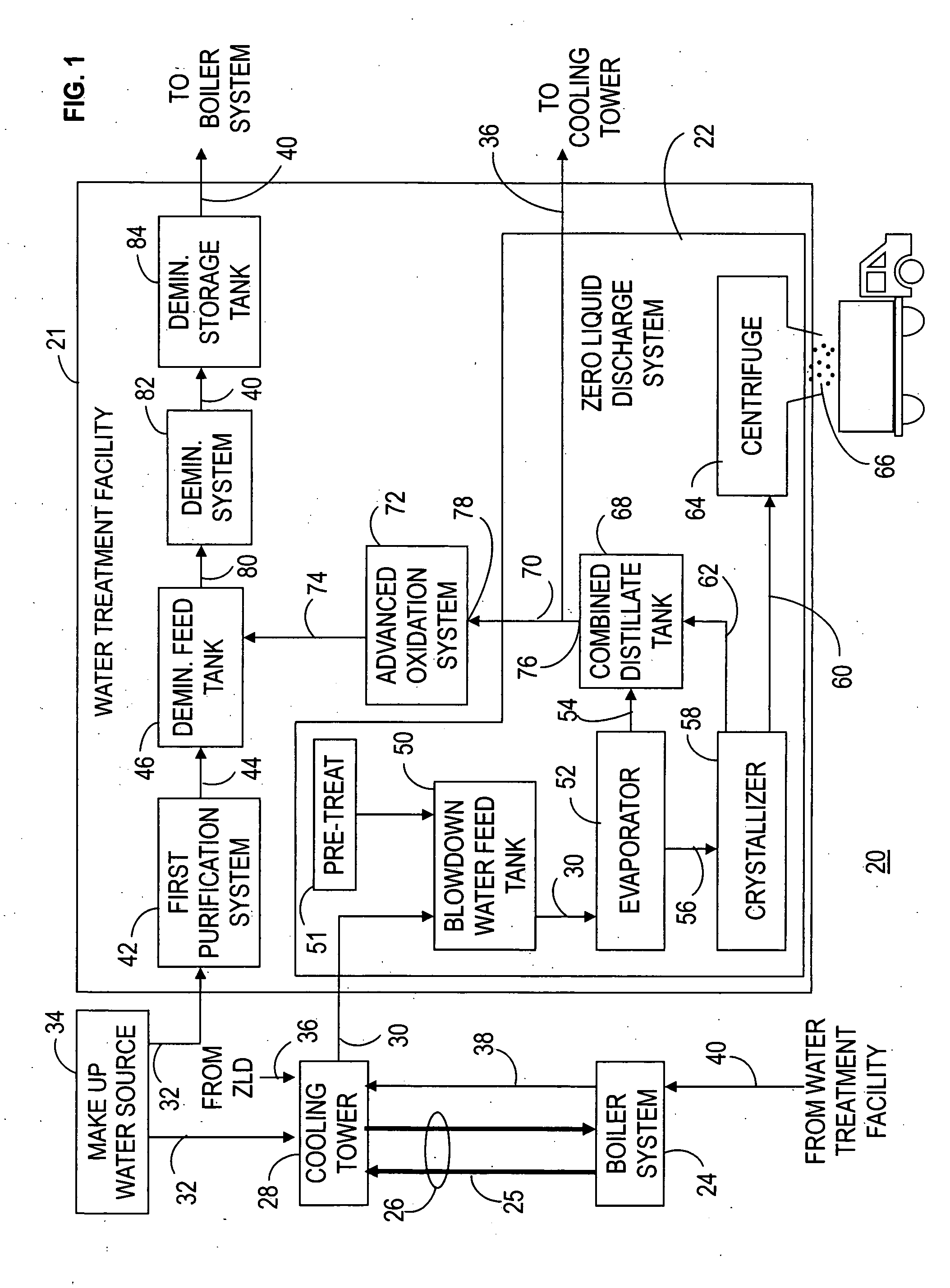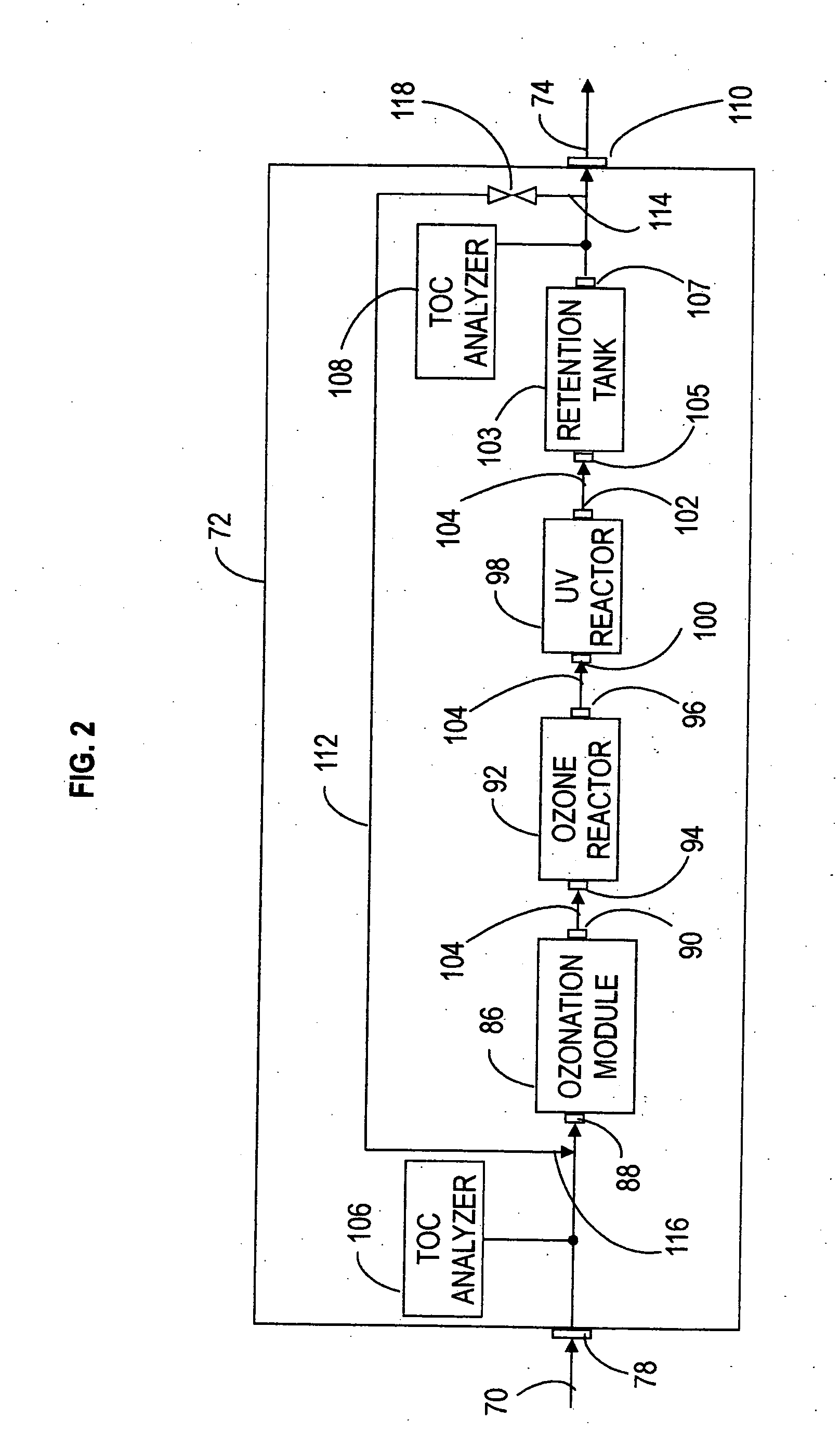System and method of reducing organic contaminants in feed water
- Summary
- Abstract
- Description
- Claims
- Application Information
AI Technical Summary
Benefits of technology
Problems solved by technology
Method used
Image
Examples
Embodiment Construction
[0019] The present invention includes a system and methodology for reducing organic contaminants for form feed water for a facility that incorporates zero liquid discharge (ZLD) techniques to reduce or eliminate waste water discharge into the environment. In particular, the present invention reduces organic contaminants in water output from a ZLD water treatment system implemented in a ZLD power plant. Total organic carbon (TOC) levels provide a measure of the amount of organic contaminants suspended or dissolved in water. Consequently, the present invention reduces organic contaminants in water, and verifies that reduction through the measurement of a TOC level in the product water.
[0020] A high TOC level found in evaporator distillate produced by a brine concentrator of a ZLD treatment system is of particular concern to the present invention. This evaporator distillate having a high TOC level, in excess of 300 ppb (parts per billion), is unsuitable for boiler feed water of a ZLD ...
PUM
 Login to View More
Login to View More Abstract
Description
Claims
Application Information
 Login to View More
Login to View More - R&D
- Intellectual Property
- Life Sciences
- Materials
- Tech Scout
- Unparalleled Data Quality
- Higher Quality Content
- 60% Fewer Hallucinations
Browse by: Latest US Patents, China's latest patents, Technical Efficacy Thesaurus, Application Domain, Technology Topic, Popular Technical Reports.
© 2025 PatSnap. All rights reserved.Legal|Privacy policy|Modern Slavery Act Transparency Statement|Sitemap|About US| Contact US: help@patsnap.com



